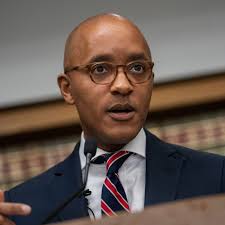DOJ Rolls Out Voluntary Disclosure Program for US Attorneys’ Offices

The Justice Department is on a marketing campaign – pushing a simple message. If your company commits misconduct, come in and confess to the Justice Department. To push this message, DOJ has tinkered with its Corporate Enforcement Policy, and bent over backwards to encourage, cajole and persuade companies to come in and confess to misconduct.
The Justice Department consists of various components and, unless you are an “insider,” may be hard to follow. There are 94 U.S. Attorneys’ Offices that report directly to the Deputy Attorney General’s Office. At the Justice Department, the Executive Office of US Attorney’s supports US Attorneys Offices around the coun try. The Criminal Division itself is separate from the US Attorney’s Offices and reports directly to the Deputy Attorney General’s Office. Of course, the US Attorneys coordinate, at times, and assign DOJ prosecutors from the Criminal Division to individual cases. But the bulk of the US Attorneys prosecutions do not include Criminal Division Attorneys.
All of this is to point out why the US Attorneys’ Offices recent announcement of voluntary disclosure procedures is an important event – the bulk of all criminal prosecutions are carried out on a day-to-day basis by individual US Attorneys’ Offices. This new policy is in line with DOJ’s Criminal Division implementation of its own voluntary disclosure program. It is the first time in DOJ’s history that the US Attorneys’ Offices have adopted a voluntary disclosure program.

The new policy operates similarly to the Justice Department’s Corporate Enforcement Program – in the absence of an aggravating factor, the USAO will not seek a guilty plea where the company has: (a) voluntarily self-disclosed; (b) fully cooperated; and (c) timely and appropriately remediated the criminal conduct. Aggravating factors that may warrant the USAO seeking a guilty plea include, but are not limited to, misconduct that: (a) poses a grave threat to national security, public health, or the environment; (b) is deeply pervasive throughout the company; or (c) involved current executive management of the company. The presence of an aggravating factor does not necessarily mean that a guilty plea will be required. The USAO will assess the relevant facts and circumstances to determine the appropriate resolution.
A timely voluntary disclosure means a company must self- report prior to an imminent threat of the misconduct being revealed or the advent of a government investigation. A corporation’s divulgence must also come prior to the misconduct becoming publicly known, or before the government learns of the malfeasance, and the company will bear the burden of demonstrating to federal prosecutors that the disclosure is timely.
A voluntary disclosure must include all relevant facts concerning the misconduct that are known to the company at the time of the disclosure. The USAO recognizes that a company may not be in a position to know all relevant facts at the time of a VSD because the company disclosed reasonably promptly after becoming aware of the misconduct. Therefore, a company should make clear that its disclosure is based upon a preliminary investigation or assessment of information, but it should nonetheless provide a fulsome disclosure of the relevant facts known to it at the time. The USAO further expects that the company will move in a timely fashion to preserve, collect, and produce relevant documents and/or information, and provide timely factual updates to the USAO. Should the company conduct an internal investigation, the USAO expects appropriate factual updates as that investigation progresses.

To meet the remediation requirement, the company must agree to pay all disgorgement, forfeiture, and restitution resulting from the misconduct. Where a company meets all the requirements, the USAO may choose not to impose a criminal penalty, and at a minimum will not impose a criminal penalty that is greater than 50% below the low end of the U.S. Sentencing Guidelines fine range. If an aggravating factor is present, the USAO may require the company to enter a guilty plea and recommend a reduction of at least 50% and up to a 75% reduction off the low end of the U.S. Sentencing Guidelines fine range and will not require appointment of a monitor if the company has, at the time of resolution, demonstrated that it has implemented and tested an effective compliance program.















